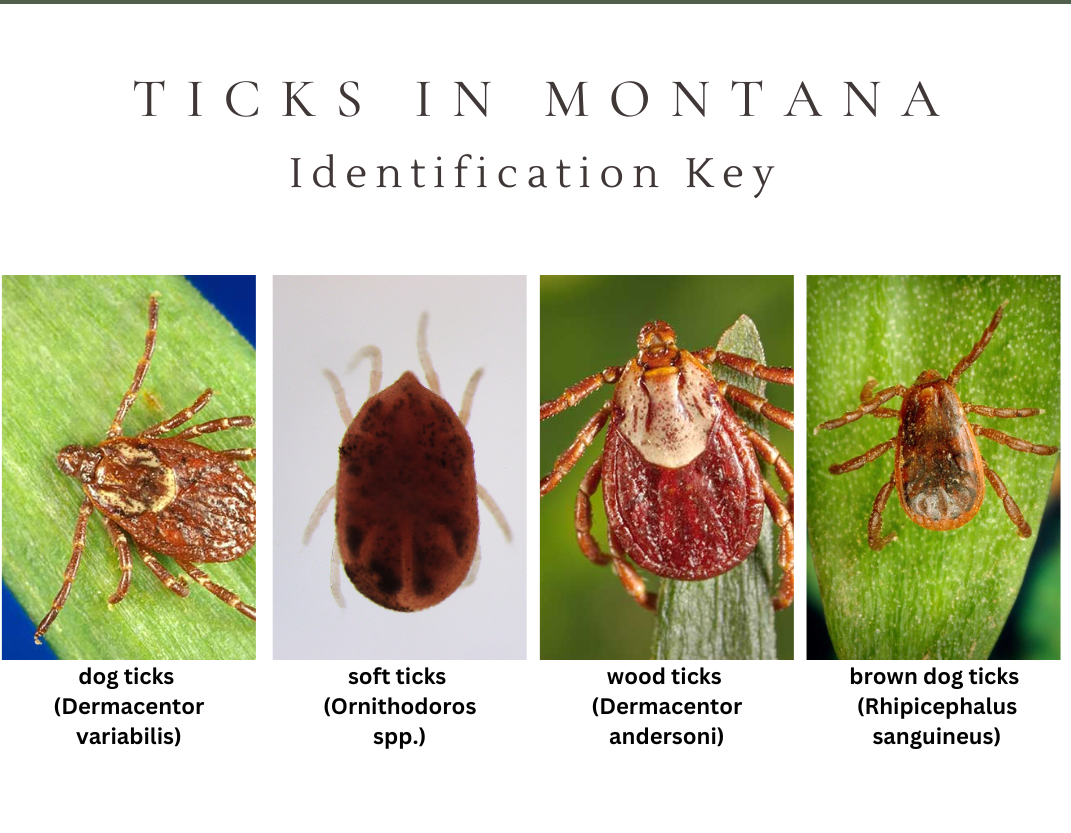Montana Tick-borne Illnesses

| Disease/causal organism | Incidence in Montana | Symptoms | Tick vectors |
|---|---|---|---|
| Rocky Mountain spotted fever/rickettsiosis (a bacterium, Rickettsia rickettsii) |
Rare, much more common in some areas along the Atlantic coast. About 8 cases per year, on average, are reported in Montana. | Initially, a general feeling of malaise and/or aches. A characteristic rash develops, starting on the wrists and ankles and later spreading to the rest of the body, including palms and the soles of feet. High fever is associated with infections. | Rocky Mountain wood tick, American dog tick. |
| Tularemia (a bacterium, Francisella tularensis) |
Rare; only 5 cases on average are reported in Montana. Can be widespread in wild animals, particularly rabbits. | Sudden high fever, general weakness and swelling/pain of the lymph nodes. | Rocky Mountain wood tick, American dog tick. Most human infections occur from contact with the blood of infected animals (e.g., while skinning rabbits). |
| Colorado tick fever/biphasic fever (a virus) |
Rare; only 4 cases, on average, are reported in Montana. | Generally flu-like, including aching, fever, chills and fatigue. This typically lasts for 1 to 3 days. More severe complications sometimes develop. | Rocky Mountain wood tick, American dog tick. |
| Tick-borne relapsing fever/borreliosis (a bacterium, Borrelia hermsii) |
Very rare. | Rapidly developing fever 3 to 10 days after initial infection. Fever declines after about 4 days but may recur in multiple cycles. | Soft ticks of the genus Ornithodoros that are associated with rodents (e.g., chipmunks, pine squirrels). Human infections typically occur when camping in rustic cabins inhabited by infected rodents. |
| Lyme disease (a bacterium, Borrelia burgdorferi) | Most common tickborne illness in Montana residents even though all cases acquired disease out of state. Thirteen cases on average. Most US cases are from the northeastern, mid-Atlantic and north-central US. | Symptoms that occur 3 – 30 days after tick bite include fever, chills, headache, fatigue, muscle and joint aches. Rash occurs in 70% - 80% of infected cases. It is 12 inches or more and may be located on any area of the body. Later signs and symptoms severe headaches and neck stiffness, arthritis with joint swelling, and facial or Bell ’s palsy. | Blacklegged tick or deer tick. Not found in Montana. Most people infected by immature ticks that are less than 2mm in size. |




